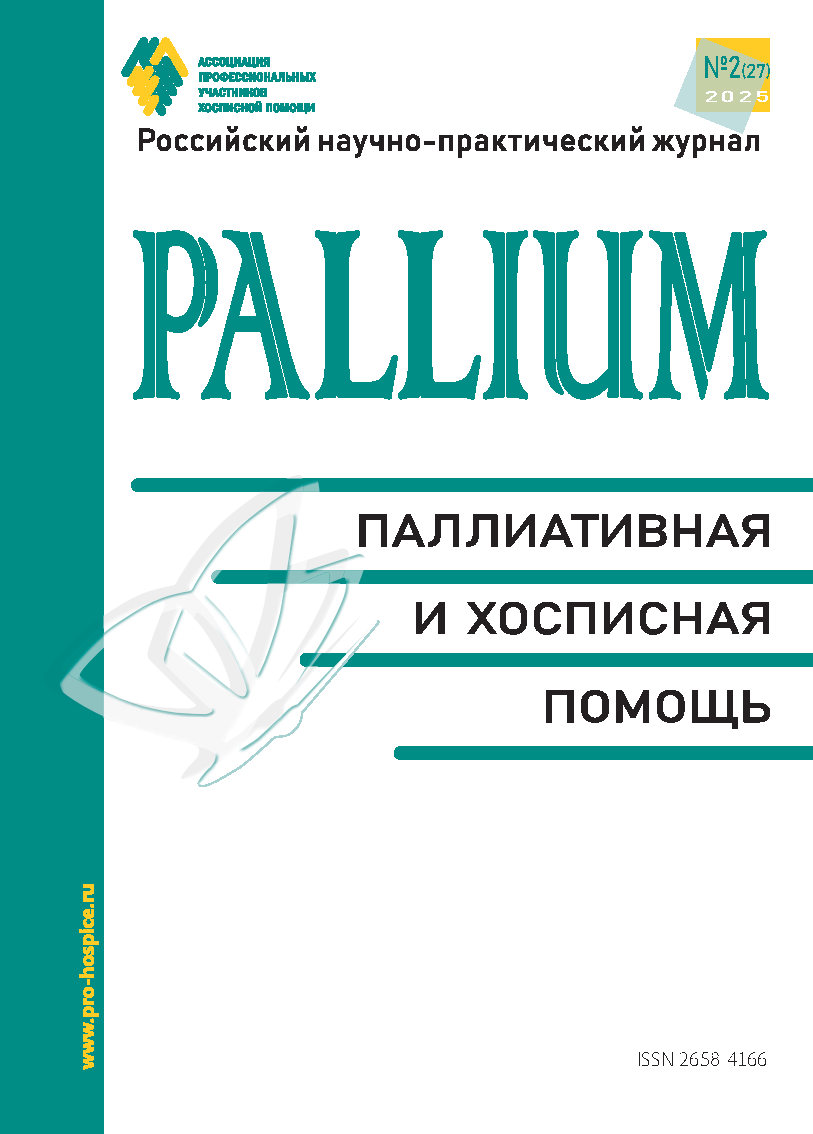Emetic Syndrome in Adult Patients Receiving Palliative Medical Care in Outpatient and Inpatient Settings: Results of a Pilot Epidemiological Study
Abstract
The article presents the results of a study on the prevalence of emetic syndrome among patients in need of palliative medical care, its most common causes, and preferred treatment methods. The study was conducted via an online survey of palliative care physicians working in specialized palliative care facilities — 133 physicians in inpatient and 95 in outpatient settings from 43 regions of the Russian Federation. According to the respondents, emetic syndrome occurs in 16–50% of palliative care patients. Therapy-resistant emetic syndrome is observed in 1–10% of cases. The most commonly cited causes were tumor intoxication (77%) and drug side effects (76%). Metoclopramide is used by 97% of doctors as the first-line antiemetic, and haloperidol is used by 52% as second-line therapy. On average, it takes physicians 5–7 days to select an effective antiemetic therapy.
References
Атлас мира по паллиативной помощи, 2-е изд. Под ред. Коннор С. Лондон, 2020 — Пер. с англ. Благотворительный фонд помощи хосписам «Вера», 2023. Доступен: https://pro-palliativ.ru/library/ atlas-mira-po-palliativnoj- pomoshhi/
Национальное руководство по паллиативной медицинской помощи в онкологии. Под ред. А. Д. Каприна и Г. Р. Абузаровой. 2023, 522 с.
Сопроводительная терапия в онкологии: практическое руководство. Под ред. С. Ю. Мооркрафта, Д.Ю.Л. Ли, Д. Каннингэма, пер. с англ. Под ред. А. Д. Каприна / М.: ГЭОТАР-Медиа, 2016, с. 127–137.
Stephenson J., Davies A. An assessment of aetiology- based guidelines for the management of nausea and vomiting in patients with advanced cancer. Support Care Cancer. 2006; 14(4): 348–353.
Невзорова Д. В., Кудрина О. Ю., Сидоров А. В. Справочник лекарственных препаратов. Паллиативная медицинская помощь взрослым. М.: ГЭОТАР-Медиа, 2025, 624 с

